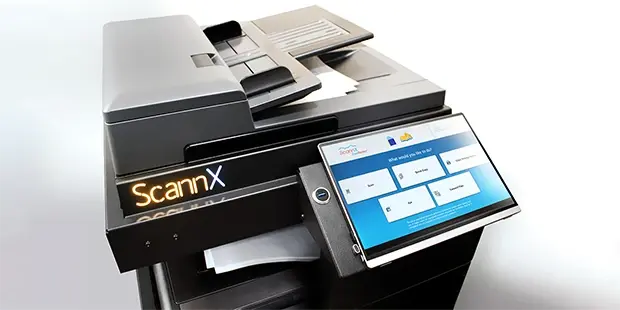The twenty-first century student lives in a technology-driven world, and to stay relevant, your academic library needs to keep up with your students’ ever-changing needs. Libraries that understand and accept these changes should constantly seek out better ways for students to share work, collaborate on projects and broadcast information rapidly across all digital mediums.
One place to start is with your library’s book scanner – this key piece of library technology accelerates the transfer of information in a way no other library equipment is able to. With the right book scanner, student collaboration reaches a new level of technology-driven learning.
Here are five ideas to improve student collaboration in your academic library with the latest book scanning technology:
1. Scanning to Mobile
Harness the capabilities of “scan to smartphone” or “scan to mobile” technology to meet the demands of your tech-savvy students. Maximize their collaboration by hosting a workshop to demonstrate how easy it is to transfer information from a book straight to their smartphone or tablet using your library book scanner.
2. Direct-to-Email Scans
What if students don’t have a smartphone or tablet? Forgot their USB flash drive? Students should be able to scan directly into their email, attaching the scanned file without having to save it to your hard disk or fish it out of a temp folder.
If your book scanner doesn’t already offer a “scan to email” function, consider having it implemented. Book scanning in such a send-ready format enables students to export library content to other learning hubs: the classroom, the lab or a distant mobile device.
3. Scanning to the Cloud
According to a recent Pew Research survey of teachers and other educators, digital document sharing platforms such as Google Drive improve student writing and learning. The collaborative environment of live writing and editing offered in Google docs and spreadsheets improves peer sharing and learning as well.
In addition, integrate Google Drive with your current book scanning technology as a form of information backup. Sharing content in a cloud-based system like Google Drive becomes an imperative for students over an entire semester. USB drives and other physical devices get lost, ruined or stolen, but the cloud is safe and accessible from anywhere.
4. Scanning for Interlibrary Loan
Interlibrary loan (or ILL) is a librarian’s best friend…and worst enemy – it supports learning and education across miles (and sometimes borders) but is also expensive and time-consuming when not serving your local students. Save time and expense by leveraging your book scanning technology for ILL requests.
Reduce shipping time and costs – send a digital readable and editable version of the text instead of hunting down a book, digging it out of storage and shipping it off. Protect rare or delicate texts by using a book scanner with a book-edge design that doesn’t damage the spine of the book in the scanning process. Also, scanning items for ILL means your students and faculty still get to use the original materials for research or study.
5. Friendly User Interface
One of the most overlooked components in many scanning applications is the user interface (UI) of the equipment. Being able to approach a new machine and understand its purpose, function and capabilities is paramount to meeting your twenty-first century students’ needs.
Friendly UI means students harness the technology more often and collaborate with their peers on shared documents more regularly. Academic libraries also see more ROI of printed materials when students are given the option to digitize the content.
Keep your academic library up to date with twenty-first century student needs by harnessing the collaborative power of your book scanner. Once students have a piece of learning content digitized, they have the potential to take it anywhere and collaborate with anyone.
Transform your academic library today – click the button below to request your free trial of a ScannX Book ScanCenter for 30 days, risk-free.




